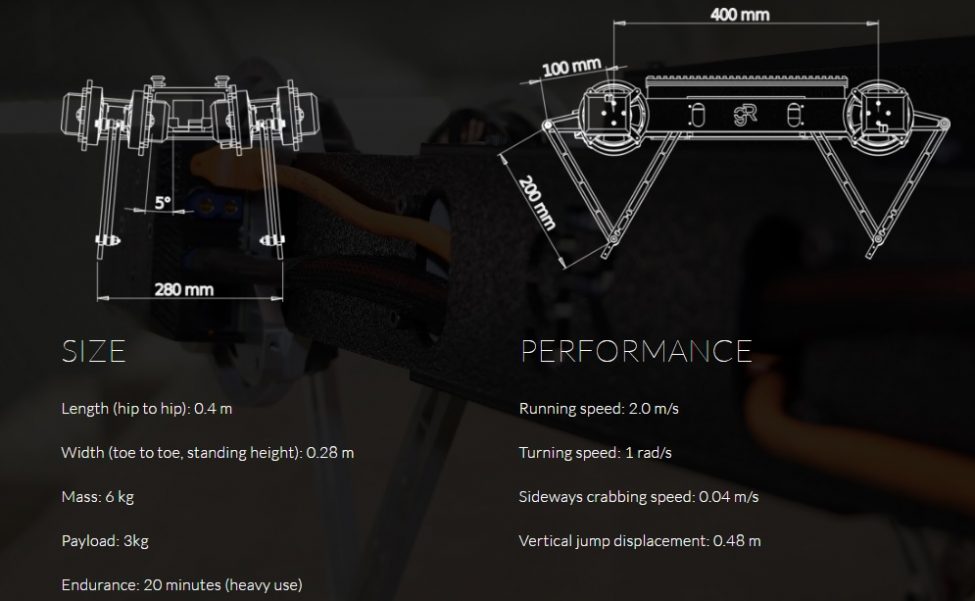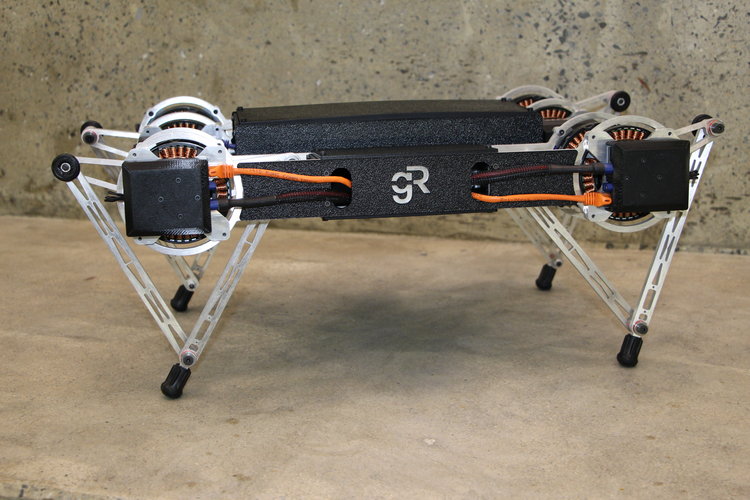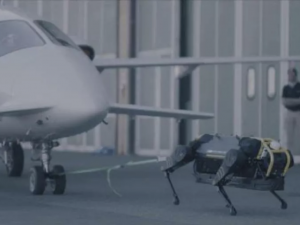The Ghost Minitaur is proof of our entering into a golden age of robotics, as this powerful robot opens doors, climbs fences, and leaps and bounds up stairs.
Ghost Robotics gives us a three-foot tall superhero of a bot.
The strength of the Minitaur is its well designed, but not over-designed leg system.
The quadruped’s individual legs have their own powerful system.
Each leg system is run with two brushless electric motors (brushes are what typically make a lot of our throw-away motors garbage after heavy usage and time, ie. a car’s alternator).

These motors provide the thrust for each Minitaur leg’s 5-bar linkage assembly, which is offset at 5 degrees for carefully determining the positioning and final landing position for the legs as the bot walks, runs, rolls, climbs, and jumps a few feet in the air to achieve its goals.
The sheer ease with which this bot can hurl itself straight upward and manipulate an arm to open a door knob is impressive.
But then seeing Minitaur as she flies up a set of stairs or even catch its legs over and upward to traverse a chain-link fence is freaking amazing.
The elegance of this robot is its simplicity.
The Minitaur has no gearbox between its motors to add weight, friction, and drag on its adeptly feeling leg system. It is direct drive and proud!
Its body is minimalistic – it has what it needs and no more – and it weighs just 6 kilograms and comes fully assembled.

And this little guy runs at two meters per second!
There are two downsides to the Minitaur right now: one is that it is radio controlled and not semi-autonomous out of the box (more on this later) and two is that its battery can only handle twenty minutes of heavy usage at this point (additional spares are available to buy).
Now the STM32F series microcontroller brain onboard controls the intricate lower-level leg operations, such as how each motor needs to rotate at a certain instant and control the force feedback.
But if you want your Minitaur to make its own guard rounds around your personal library cache of valued literature or to have its own vision processing or more advanced control schemes, then you will want to take advantage of the processor’s compatibility with an Arduino environment or a Raspberry Pi (via connections on the board).
Give this little droid a compatible brain, like a Raspberry Pi 3, which can display images via a built-in HDMI port and runs Linux at 1.2 Gigahertz, and is more akin to an actual computer than a microcontroller, and let programming of a robotic brain function shatter the ceiling on possibilities.






